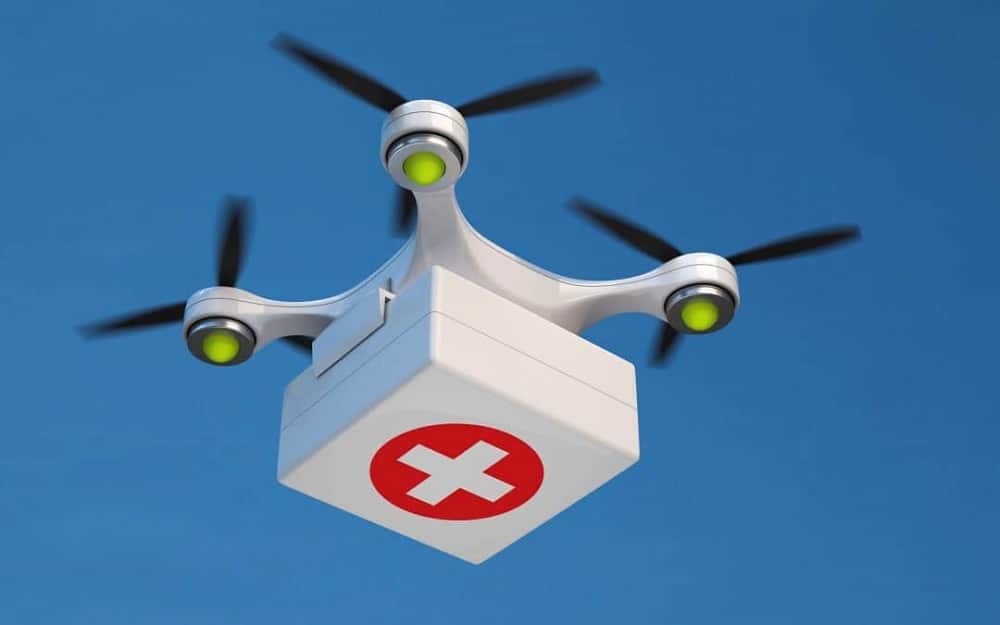
Drones are great, they can make our work easier and more efficient and they can also provide us with a rewarding and fun hobby. Combine the two and you could end up with a job you love and find fun, however, drones are really, really dangerous!
Safety In The Sky
Most hobbies from hunting to playing sports have some dangers with them but the real danger with drones is perhaps that no one realizes the potential damage that you could really do with them and there is a segment of the market that definitely regards them as toys which they are not, they need to be respected.
Up until now no one has managed to take down a commercial aircraft playing with a hobby drone so please use common sense and ensure that you are not the first, this is a very possible scenario and not something out of the movies.
With a momentary lapse of concentration a drone pilot could easily start a serious fire (burn your house down!) or lose a finger. Imagine the impact those kind of injuries or events could have at an event like a wedding or perhaps even a funeral and you start to understand the impact that a badly flown or badly maintained drone could have.
When taking to the skys for the first time you meet with a similar dilemma to the first time job seeker, unable to get the job because they have no experience but unable to get experience as they have no job.
The more you fly your drone the safer you will generally be but you do need to get the thing up in the air and play around with it to familiarize yourself with the way it works and become a better pilot.
There will be a post in the next few days to give you some advice on taking your first flight and, while that post will contain a lot of details, at this time the best one liner of advice is to simply take yourself away from everyone and everything to master the art of flying your drone. When you take to the skys for the first time you will be an absolute hazard!
Generally speaking it is good practice to keep your drone a sensible distance away from buildings, carparks, roads. wildlife. and generally anything that someone would be annoyed if you destroyed. In the UK the CAA (Civil Aviation Authority) apply the rule of 50 meters between you and anything classed as a hazard (something that you should not be flying close to).
Some areas do have absolute bans, the only way to be sure you are flying within the law is to research the areas you plan to fly in, however, some manufacturers have done a little to help enforce common sense blocking using no fly technology in combination with GPS to stop their drones from even been able to take off if they are in the vicinity of an airport.
Safety In the Consumer Drone Marketplace
Consumer drones at all grades from toy and hobby and even to an extent commercial grade drones are new to the market. Development is still in the early phases and ideas and features are been implemented as they are though of and as they become technically available. Think about the average car on the road and how long we have been driving, generally auto stop breaks have only become widely available in the last 5 years. Getting into the drone thing right now is like getting into a car when they first took to the roads many, many decades ago!
What is safe flying
When we talk about drone and flight safety there are really two areas of concern there is the avoidance of damaging anything or one you may encounter when flying the drone but then the secondary element of safe flying is keeping your drone safe.
RTF Have The Edge!
This is something you wont hear often on this but in the safety department RTF drones usually have the edge, that’s right, RTF drones are the safest!
In our buyers guide we did talk down RTF a little as we want everyone to get the most out of their drones and the absolute best way to do that is to become an expert which is more easily done if you master the art of building your own drone, however, the buyers guide did talk about fine tuning a drone and the safest drone to buy is one that will have the latest safety features finely tuned to work optimally (read, an RTF!).
The problem with builder drones, drones from kits or even drones other people have custom built and then sold on is that the safety feature is just not the most interesting thing. Drone enthusiasts rarely get into the hobby to build safe drones, more likely the experts who build their own drones are doing so because they want to create faster, more powerful more maneuverable drones. Your car insurance goes up as you buy more expensive and more powerful cars for a reason, its because they are capable of causing more damage, the same thing applies when it comes to flying drones. Some of the extreme customized tweaked for speed and power drones we have seen look like they could take down a building at full speed.
Wind And Top Speed
It is best to avoid flying in exceptionally windy conditions and even in mild conditions make sure you are aware of the wind, even at low levels. A new pilot might think a mild wind is almost unnoticeable but consider if your drones maximum speed is 11 meters per second which is roughly 25 miles per hour. Now take a slightly over average UK wind speed of 8 meters per second which is around 17 mph.
When you fly your drone into the wind you are going to have a top speed of 25-17mph = 8mph but when going in the opposite direction you are going to achieve 25+17mph and find you drone moving at 42mph, a 34mph difference simply by changing direction.
But Before Take Off Remember The Danger Starts When You Take Your Drone Out Of The Box
When you think of a drone related injury you are likely going to be thinking of a somewhat comical drone falling out of the sky and hitting someone but a falling flyaway can be serious, especially in a built up area, however, long before your drone takes to the sky there are other hazards you need to be aware of.
Propellers
When fitting and testing your propellers bear in mind they are designed to spin at speed just like on a helicopter and just because the proportions are smaller does not mean the danger is alleviated, while some very small toy drones wouldn’t even hurt if you caught you finger in the propeller the more serious a drone prop could easily cause you to lose a finger… You want to avoid the propellers altogether, no testing if your drone is lightweight enough to stick your finger in!
If you are buying a drone for a minor be sure to look for one that has some kind of propeller protection/guard in place.
Arming Your Drone – The Ultimate Safety Catch
Before your drone will take off you need to arm it which basically means putting it into flight mode. Arming the drone initiates its controller and motors.
Different drones will have different processes to arm them for flight but the basic principle is the same.
Arming the drone is the last thing you do before you start flying, one the drone is armed it knows its ready to fly and it is ready to receive commands from the controller. Here is one of the biggest rules of drone flying, never touch an armed drone, ever, no matter what.
The Most Dangerous Part Of The Drone – A Battery Lesson
This is a little subjective, if you speak to someone who lost an arm in a drone crash or someone who injured themselves on a propeller they will probably have their own opinions on the most dangerous part of the drone, however, the part most likely to cause a fire through carelessness is without a doubt the battery.
You’ve no doubt read on this site or at least heard about the lipo aka the lithium polymer batteries that power a drone. In the purest sense most “lipo batteries” are actually not true lithium polymer batteries but a hybrid between two technologies.
A bit of a science lesson
Batteries use a series of chemical reactions in order to produce electricity, however, true (pure) lithium polymer batteries create the electricity via chemical reaction between dry components.
The problem with a pure lithium polymer batteries is that they are somewhat limited and drone motors are real power consumers, they also need a stable supply of power for obvious reasons.
Drone batteries are more of a hybrid combining wet and dry chemicals to facilitate a higher rate of energy discharge. As you would expect with something that has been tweaked to create a higher more aggressive performance there are increased risks associated with incorrect use.
The increase in risk is twofold, there is a lot of talk online of fire and explosions and that is definitely one side to it but there is also the annoyance of damaging and needing to replace your battery or not getting the maximum life from it due to improper care.
The most common cause of damage to lipo batteries is overcharging which is an easy oversight given mobile phones no longer suffer from this we have all become used to plugging batteries in and letting them charge, drone batteries don’t cut out in the same way and they can be overcharged.
Overcharging your drone battery can actually cause it to swell, swollen batteries are a fire hazard and susceptible to explosion.
Post Flight
Plugging in a damaged battery onto a charger can result in swelling and a fire, while no one would knowingly attempt to charge a damaged battery lipos are very fragile and you might not know if a cell has been damaged. Dropping a battery is enough to permanently damage it so you imagine the potential damage that could come from an inevitable drone crash.
Wear And Tear
For those people who have had the same cellphone for as long as they can remember and habitually plug it in every night it may come as a surprise to know that drone batteries actually wear out and have a finite amount of charges. Once a battery is performing at 20% or less it can become dangerous and you should stop using it.
A battery functioning at 20% capacity might not be powerful enough to sustain a drones flight but it is still a hazard and needs to be disposed of responsible. Responsible disposal sounds like a relatively simple task merely involving completely discharging it before you toss it out.
Best Way To Discharge A Lipo Battery
If you are involved in, are aware of or even have a local drone community that you can interact with your probably have access to a hobby shop who can safely dispose of batteries effortlessly and maybe even for free… Failing that you might have to do a little work.
The recommended way to discharge a battery yourself before disposal is connecting it to a light bulb and emerging it in a bucket of sand, true drone hobbyists become all too familiar with buckets of sand as they have a lot of uses related to batteries and discharge. You can safely store damaged batteries in buckets of sand until they are ready for disposal.










